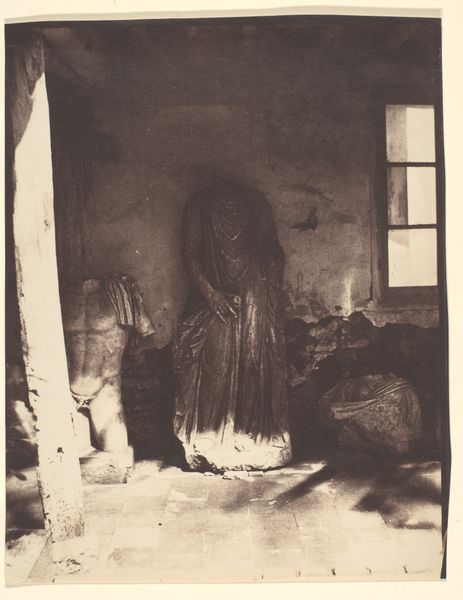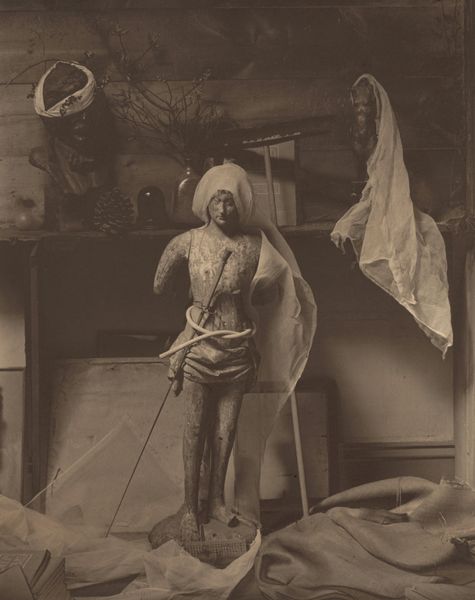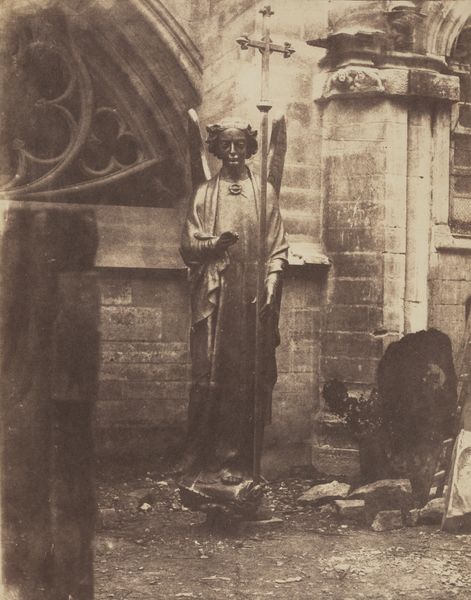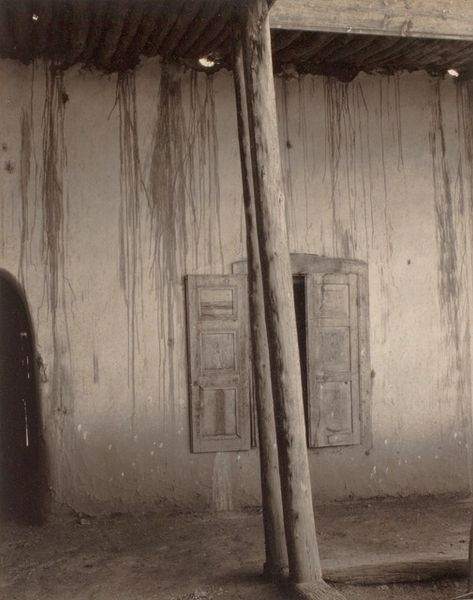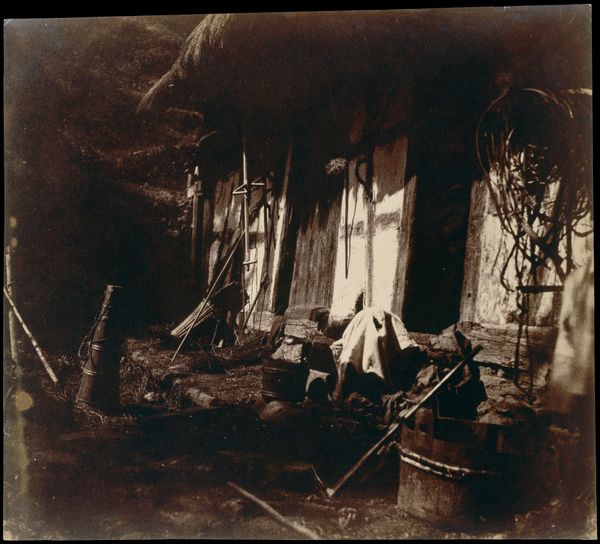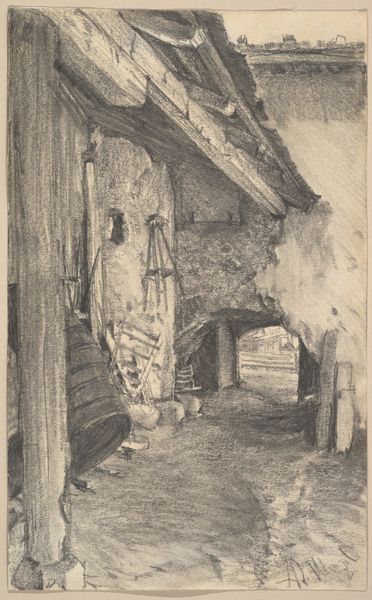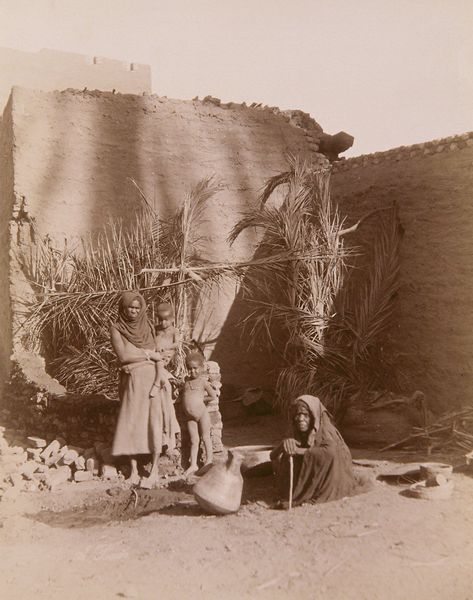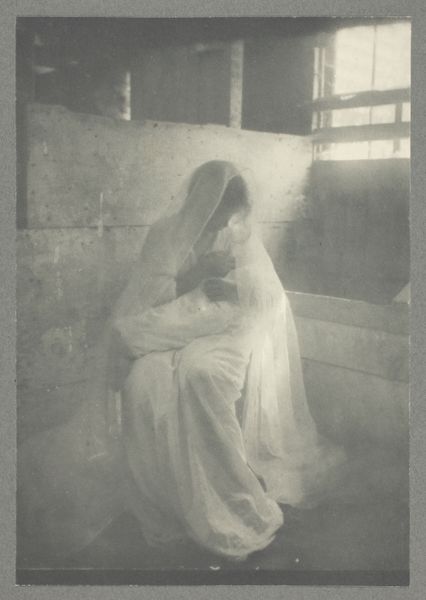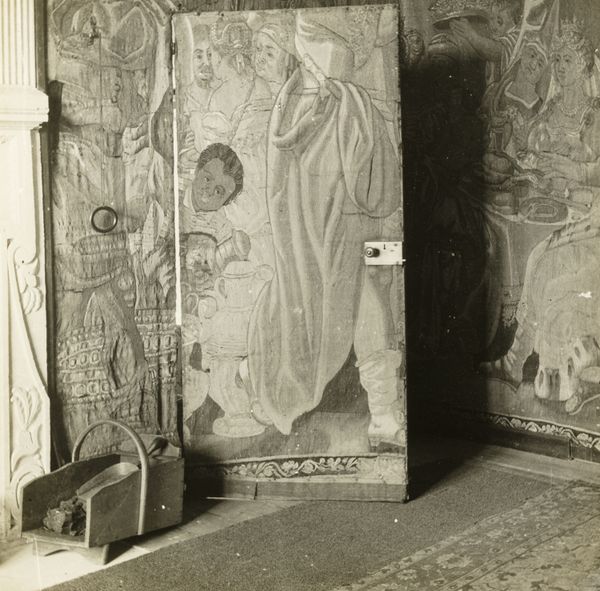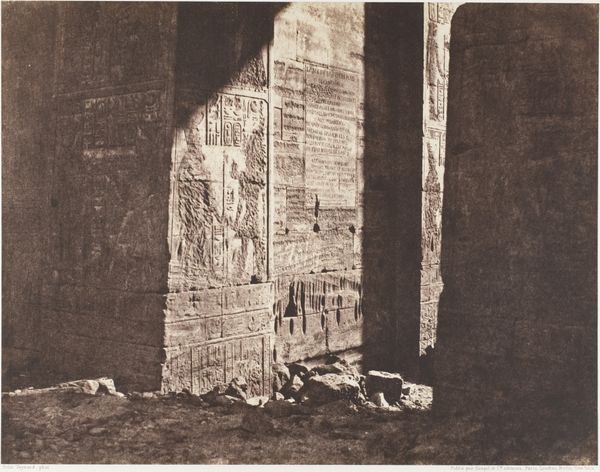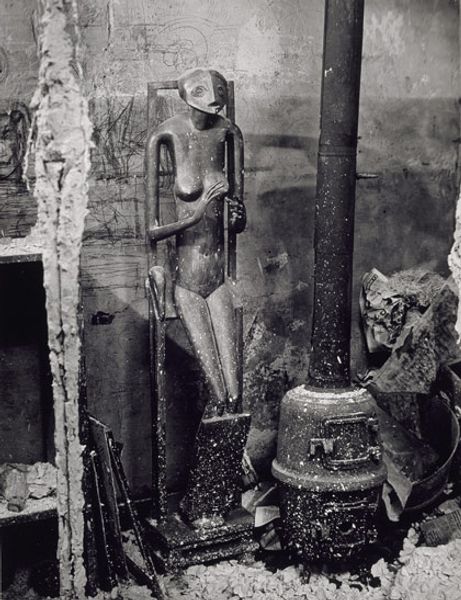![Untitled [Roman sculptures, Cherchell Museum] by John Beasley Greene](/_next/image?url=https%3A%2F%2Fd2w8kbdekdi1gv.cloudfront.net%2FeyJidWNrZXQiOiAiYXJ0ZXJhLWltYWdlcy1idWNrZXQiLCAia2V5IjogImFydHdvcmtzLzg4ODNjMzczLWVmNWMtNGYwYS05NGJlLTExZDhjN2EwMDgwYS84ODgzYzM3My1lZjVjLTRmMGEtOTRiZS0xMWQ4YzdhMDA4MGFfZnVsbC5qcGciLCAiZWRpdHMiOiB7InJlc2l6ZSI6IHsid2lkdGgiOiAxOTIwLCAiaGVpZ2h0IjogMTkyMCwgImZpdCI6ICJpbnNpZGUifX19&w=3840&q=75)
paper, photography, sculpture
#
16_19th-century
#
sculpture
#
landscape
#
charcoal drawing
#
figuration
#
paper
#
photography
#
ancient-mediterranean
#
sculpture
Dimensions: 28.4 × 22.9 cm (image/paper); 61.9 × 47.3 cm (mount)
Copyright: Public Domain
Curator: This arresting photograph, "Untitled [Roman sculptures, Cherchell Museum]," was captured by John Beasley Greene in 1856. It's currently held in the Art Institute of Chicago’s collection. Editor: Wow. Right off the bat, it's eerie. It’s like walking into a graveyard of gods. The stark light from that window throws everything into high relief. Makes you wonder about lost empires, doesn't it? Curator: Absolutely. Greene was deeply invested in documenting archaeological sites in North Africa. This image, part of that larger project, reveals a crucial intersection of art, history, and the nascent medium of photography. Editor: It feels so… modern, almost. Despite being over a century old. Maybe it's the lack of sentimentality. There’s just this raw documentation of fractured beauty, which echoes contemporary obsessions with ruin and decay. And I guess photography itself captures this ephemerality, right? Curator: Indeed. Photography allowed for a supposedly objective recording of the world, fitting neatly into the 19th-century scientific project of classifying and understanding the past. Greene’s work highlights both the documentary power and inherent subjectivity in the photographic medium, influencing perceptions and narratives surrounding colonial archaeology. Editor: Thinking about Greene making his photos on location, I wonder about the effort of hauling that gear and chemistry! I guess there's an irony, the idea of 'capturing' history, then carefully processing it into another static medium! Also the act of taking an image means removing things from its context; these sculptures isolated against crumbling walls in the middle of a foreign museum have a real haunting power. Curator: Precisely! And that tension speaks to broader questions of preservation and display, even today, how historical artifacts are extracted and recontextualized. They have stories within stories within stories, I guess! Editor: I know what you mean! Looking again now, it is a reminder that the past isn't just this smooth narrative, and seeing through his photography lens lets you remember their incompleteness; fragments reflecting other fragmented remains, waiting to be uncovered for all their strange beauty!
Comments
No comments
Be the first to comment and join the conversation on the ultimate creative platform.
